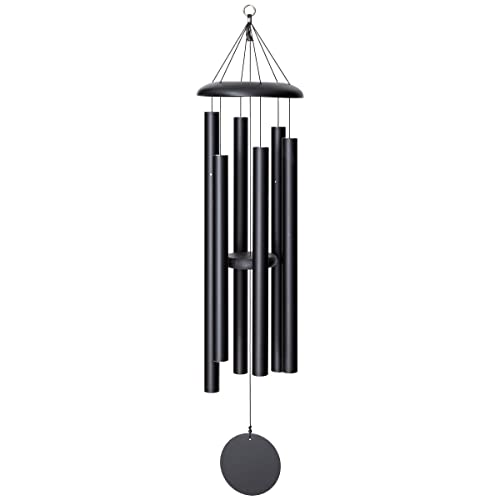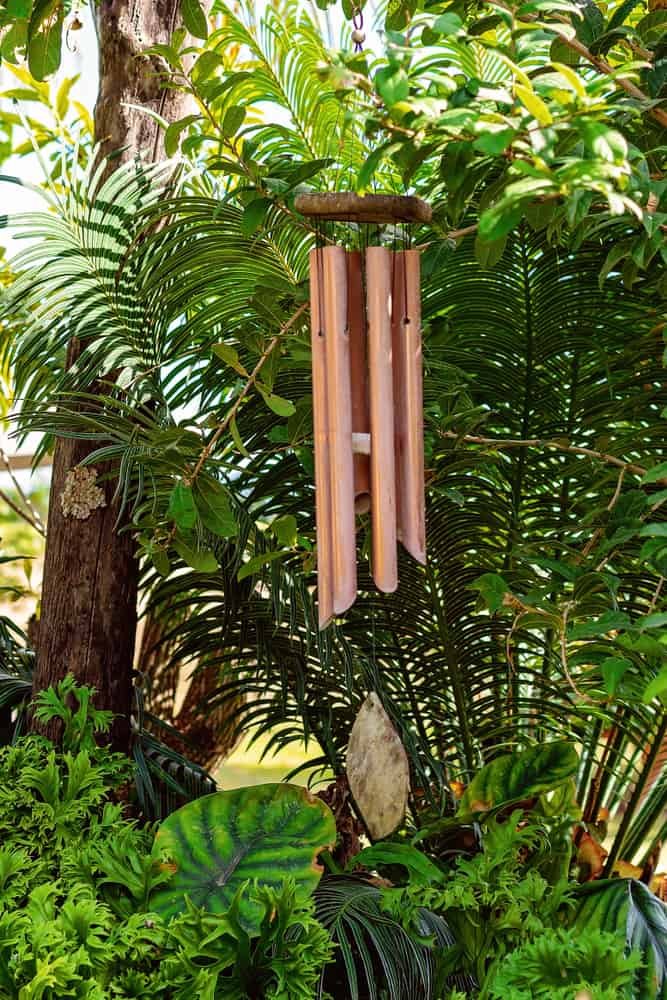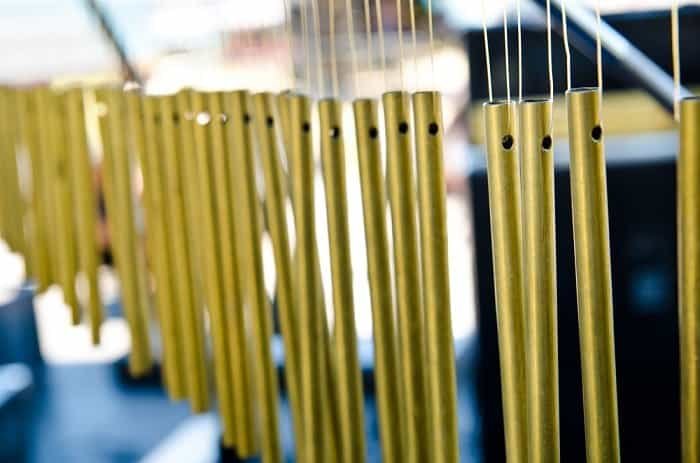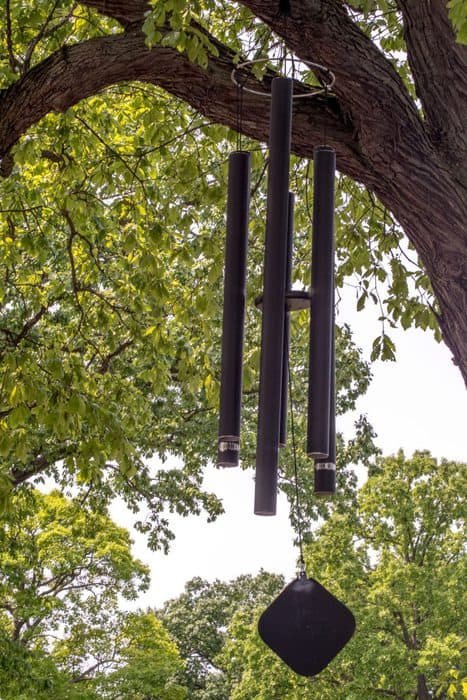Best Corinthian Wind Chimes for Your Backyard
Nothing describes the sounds of summer better than the whimsical music made by wind chimes. A backyard isn’t complete without that dangling musical ornament. If you heard or came across the term “Corinthian Wind Chimes”, you’re probably wondering what that means and how are they different from regular wind chimes.
Corinthian Bells wind chimes made by Wind River company are like the luxury cars of wind chimes. Each handmade wind chime is designed to be contemporary, durable, and have superior sound quality. The maker of these chimes use top-notch materials that are weather-resistant, visually appealing, make them in the USA, and produce beautiful acoustics.
Different styles of wind chimes have been around for thousands of years, throughout history. They were thought to ward off evil spirits and attract good ones as a symbol of religion. Keep reading to learn more about the history and uses of wind chimes, as well as some great options for purchasing your own unique set of Corinthian wind chimes.
Table of Contents
The History of Wind Chimes
The original wind chime was known as a tintinnabulum and first gained popularity in Ancient Rome. It featured multiple bells hanging from a phallus shape and was thought to bring good fortune.
It was much more common back then to believe in spirits, so rituals and items such as wind chimes around the home were meant to ward off evil spirits and welcome the good ones.
Wind chimes were often hung in places such as:
- Religious temples
- Caves
- From the eaves of shrines.
This practice began in Rome, and from there, spread to China, Japan, India, and then to other countries.
The earliest remains of wind chimes were found in Southeast Asia in 3000 B.C. and were made from bamboo, bone, shells and wood.
Common Uses for Wind Chimes
The most common reason to hang a wind chime is in memoriam of a loved one, but there are a few other reasons behind hanging the dangling music-makers.
- Memorials: Wind chimes are still connected to spirits, but not in the way you may think. The soothing sounds produced by wind chimes are often used as a tribute to deceased loved ones and as a way to keep their memory alive and present.
- Predators: Wind chimes are sometimes used on farms and gardens to scare away birds and other pests that may disturb plants and farm animals.
- Feng-Shui: Feng-Shui is all about balancing and shifting energies. Sound is one way to do so, so that’s where the wind chimes come in. Similar to good and bad spirits, Feng-Shui practitioners use sound as a way to create good energy and drive away bad energy. Hanging metal windchimes is said to promote the things that the element metal represents, such as joy, integrity, and clarity.
While there are plenty of good reasons to hang a wind chime, you can use them simply for decoration. They’re a great way to liven up your backyard, front porch, garden, or wherever you intend to hang them.
Feng Shui Rules for Hanging Wind Chimes
Hanging a wind chime with five pipes is said to cast away bad luck, typically at the home’s front entrance.
For chimes with six pipes, such as the Corinthian wind chimes, it is recommended for it to be hung in the Northwestern corner of the home.
If want to hang wind chimes on the Western side of your home (or other residences, such as an office or shop) you’ll want to purchase one with seven pipes.
Keep in mind that the more pipes you have on your chime, the more important it is to have enough airflow to create music.
Parts of a Wind Chime
Wind chimes are carefully constructed to produce the most peaceful and melodic of tunes. Their parts include:
- Overall length
- Ring hook
- Suspension cord
- Suspension platform/top circle
- Tubes
- Clapper
- Central cord or string
- Sail/Catcher
The suspension cord connects the platform and the hook, while the platform keeps each tube separated. The sail, connected to the clapper, is what catches in the wind and causes the clapper to move around, creating sounds by hitting the different tubes.
Smaller wind chimes will produce different sounds than larger wind chimes.
Corinthian Wind Chimes to Purchase
If you’re interested in purchasing a Corinthian wind chime of your very own or buying one as a gift, the following options are available:
44-Inch Copper Vain Chime

This Corinthian wind chime is one of the top sellers on Amazon. It is made in the USA and hand-tuned to the scale of C. Customers describe the sound as soft, deep, and peaceful.
30-Inch Corinthian Chime

This smaller, lower-priced Corinthian wind chime is a best seller among buyers that prefer higher pitched Corinthian wind chimes. It is hand-tuned to the scale of A.
50-Inch Black Corinthian Wind Chime

If you’re looking for a larger elegant Corinthian chime, look no further. This chime is 50 inches of sleek matte black and is hand-tuned by professionals to provide you with deep, rich tones to the scale of A. Buyers rave about the quality of construction as well as the superior sound it creates in comparison to other wind chimes.
Wind Chimes as Gifts
Wind chimes are an excellent option for someone you want to purchase a gift for. They’re a thoughtful way to show that you know someone is mourning or remembering someone no longer with us. They also make a great addition to your:
- Porch
- Garden
- Patio
- Sunroom
Most wind chimes can be personalized with engravings on the sail, which makes the gift more touching and personal.
These are reasonably priced, as well as long-lasting. The music created by wind chimes and the rumored good luck they bring are a gift that keeps on giving.
How to Hang Your Wind Chime
While you aren’t required to follow the rules of Feng Shui, it can’t hurt to keep them in mind when hanging your wind chime.
Other tips include:
- Hang it out of reach of your head, as well as other plants or walls it could bump into and potentially damage.
- Hang it where the wind can reach it from different directions.
- Move it around based on how it sounds in different locations.
Choosing a location for your wind chime should be a fun experience. You can always move it if it doesn’t fit your taste or if the sound isn’t quite what you’re aiming for. If you liked this article be sure to check out our article about Koshi Chimes were we go over a bit more in depth about this beautiful product!





